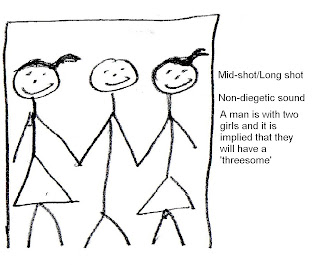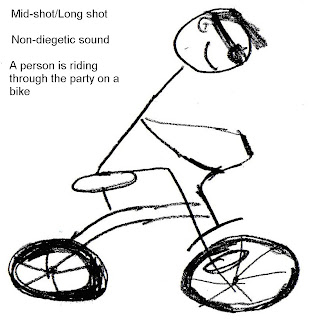4059 Alex Ladyman A2 Media
About Me

- Alexander Ladyman
- http://www.youtube.com/ladymana93 http://wilsonsmedia2011.edublogs.org/ http://wilsonsmediamarkbook.edublogs.org/
Monday, 25 April 2011
Wednesday, 20 April 2011
Friday, 15 April 2011
Sunday, 10 April 2011
Tuesday, 5 April 2011
Friday, 25 March 2011
PRODUCTION - Montage Editing
Friday, 18 March 2011
PRODUCTION - Poster Production Time Line
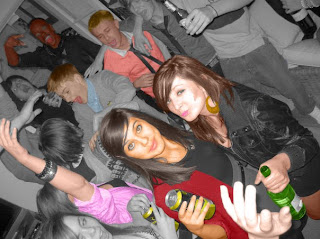
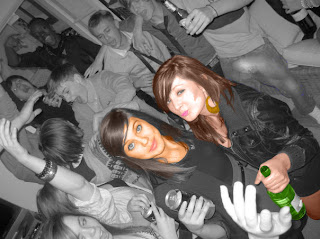

This shows the process I went through of colouring in the people in the photo. We got a number of people round my house. We then staged a party, with two of the main characters at the front of the poster. After this I edited them and turned them into colour, mainly using the colour replacement tool.
Thursday, 10 March 2011
Monday, 28 February 2011
PRODUCTION - Special Effects (Vomiting Scene)
Learn How to make cheap vomit effects. For more Props & SFX How-To Videos & Articles, visit WonderHowTo.
Wednesday, 23 February 2011
PLANNING - Music Rights
Tuesday, 15 February 2011
PLANNING - Title Sequence
Thursday, 10 February 2011
Saturday, 5 February 2011
PLANNING - Poster Ideas
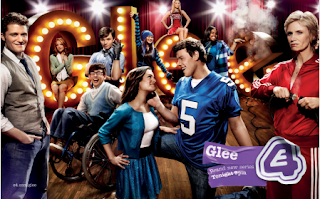
As we can see in this picture of glee, the people have been photoshopped to make them look more colourful. I liked this effect as it made them stand out more. Also whilst at channel 4 I was there when they were making the 'This is England '80' posters. I found out they made grayscales of each picture. From this I thought maybe from the grayscale they coloured in each individual person, so this is what I plan to do.
Also many films these days make character posters for the film. This is what me and my partner want to do, we will make a character poster each.

We feel that doing this will be more original and different to most posters, so will go for this idea.
Tuesday, 1 February 2011
PLANNING - Location
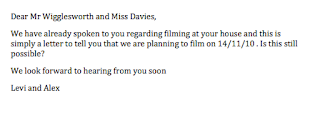
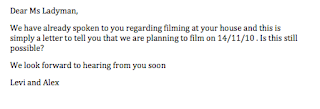
Thursday, 27 January 2011
PLANNING - Title and Font Focus Group
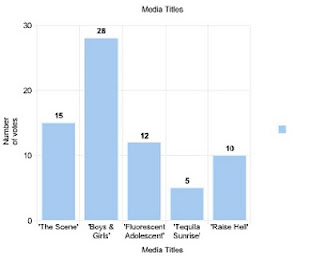 From this graph we can see clearly that the favourite title was 'Boys & Girls'. After this was decided we designed the word in many different fonts. We then asked the same focus group what they thought was the best font. Here are the results:
From this graph we can see clearly that the favourite title was 'Boys & Girls'. After this was decided we designed the word in many different fonts. We then asked the same focus group what they thought was the best font. Here are the results: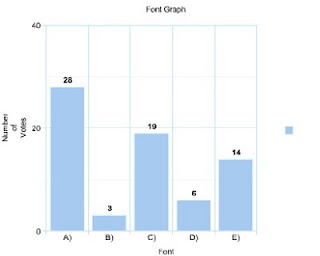
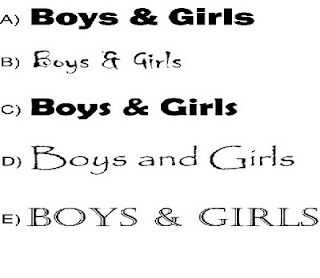
Thursday, 20 January 2011
PLANNING - Music
Saturday, 15 January 2011
PLANNING - Casting
Sunday, 9 January 2011
PLANNING - Outfits
Monday, 3 January 2011
PLANNING - Film concepts

Wednesday, 29 December 2010
PLANNING - Production Logo

Monday, 20 December 2010
Wednesday, 15 December 2010
Friday, 10 December 2010
PLANNING - Mock Magazine Final
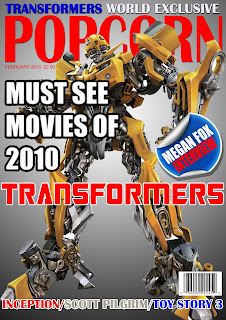 magazine I will obviously change the main picture and the
magazine I will obviously change the main picture and the Thursday, 2 December 2010
PLANNING - Mock Magazine Focus Group
Tuesday, 30 November 2010
RESEARCH - Target Audience
Friday, 26 November 2010
RESEARCH - Media Theory
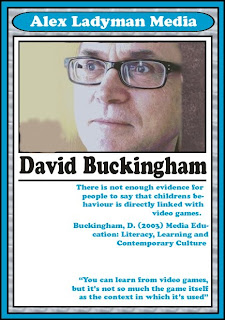
Saturday, 20 November 2010
RESEARCH - Propps Narrative Theory
Sunday, 14 November 2010
RESEARCH - Moral Panic - Sex Trafficking
Monday, 8 November 2010
RESEARCH - UK Privacy Law
A friend of Mr Kaye had been granted an interlocutory injunction preventing the editor (Anthony Robertson) and the newspaper (the Sunday Sport) from using the material, which they appealed.
Lord Justice Glidewell said "It is well-known that in English law there is no right to privacy, and accordingly there is no right of action for breach of a persons privacy. The facts of the present case are a graphic illustration of the desirability of Parliament considering whether and in what circumstances statutory provision can be made to protect the privacy of individuals."
In the absence of the right to privacy, Mr Kaye's advisers based their claim on libel, malicious falsehood, trespass to the person and passing off. The Court of Appeal ruled that none of these torts was applicable except malicious falsehood, and on this basis the only remedy available was that the newspaper was prohibited from stating any inference that Mr Kaye had consented to the story.
The academic response to this ruling has been negative, e.g. "Kaye remains a compelling demonstration of the limits of both existing English law and of the limitations of an approach that relies upon inadequate existing remedies to protect privacy."
1998-2000
The Human Rights Act 1998 is an Act of Parliament of the United Kingdom which received Royal Assent on 9 November 1998, and mostly came into force on 2 October 2000. Its aim is to "give further effect" in UK law to the rights contained in the European Convention on Human Rights. The Act makes available in UK courts a remedy for breach of a Convention right, without the need to go to the European Court of Human Rights in Strasbourg. It also totally abolished the death penalty in UK law (although this was not required by the Convention in force for the UK at that time)
2008
In 2008 the editor of the Daily Mail criticised the Human Rights Act for allowing, in effect, a right to privacy at English law despite the fact that Parliament has not passed such legislation. Paul Dacre was in fact referring to the indirect horizontal effect of the Human Rights Act on the doctrine ofbreach of confidence which has moved English law closer towards a common law right to privacy.In response the Lord Chancellor Lord Falconer stated that the Human Rights Act had been passed by Parliament, that people's private lives needed protection and that the judge in the case had interpreted relevant authorities correctly
2011
It has become apparent that many rich and powerful people are taking out injunctions or super injunctions. This has raised the argument, do the public have a right to know, or do the celebrities have a right to privacy.
Tuesday, 2 November 2010
RESEARCH - Roland Barthes
The Hermeneutic Code refers to any element of the story that is not fully explained and hence becomes a mystery to the reader.
The full truth is often avoided, for example in:
Snares: deliberately avoiding the truth.
Equivocations: partial or incomplete answers.
Jammings: openly acknowledge that there is no answer to a problem.
The purpose of the author in this is typically to keep the audience guessing, arresting the enigma, until the final scenes when all is revealed and all loose ends are tied off and closure is achieved.
The Proairetic Code (ACT)
The Proairetic Code also builds tension, referring to any other action or event that indicates something else is going to happen, and which hence gets the reader guessing as to what will happen next.
The Hermeneutic and Proairetic Codes work as a pair to develop the story's tensions and keep the reader interested. Barthes described them as:
"...dependent on ... two sequential codes: the revelation of truth and the coordination of the actions represented: there is the same constraint in the gradual order of melody and in the equally gradual order of the narrative sequence."
The Semantic Code (SEM)
This code refers to connotation within the story that gives additional meaning over the basic denotative meaning of the word.
It is by the use of extended meaning that can be applied to words that authors can paint rich pictures with relatively limited text and the way they do this is a common indication of their writing skills.
The Symbolic Code (SYM)
This is very similar to the Semantic Code, but acts at a wider level, organizing semantic meanings into broader and deeper sets of meaning.
This is typically done in the use of antithesis, where new meaning arises out of opposing and conflict ideas.
The Cultural Code (REF)
This code refers to anything that is founded on some kind of canonical works that cannot be challenged and is assumed to be a foundation for truth.
Typically this involves either science or religion, although other canons such as magical truths may be used in fantasy stories. The Gnomic Codeis a cultural code that particularly refers to sayings, proverbs, clichés and other common meaning-giving word sets.
Friday, 29 October 2010
RESEARCH - Certificate

Suitable only for 15 years and over
No one younger than 15 may see a ‘15’ film in a cinema. No one younger than 15 may rent or buy a ‘15’ rated video work.
Discrimination
The work as a whole must not endorse discriminatory language or behaviour.
Drugs
Drug taking may be shown but the film as a whole must not promote or encourage drug misuse. The misuse of easily accessible and highly dangerous substances (for example, aerosols or solvents) is unlikely to be acceptable.
Horror
Strong threat and menace are permitted unless sadistic or sexualised.
Imitable behaviour
Dangerous behaviour (for example, hanging, suicide and self-harming) should not dwell on detail which could be copied. Easily accessible weapons should not be glamorised.
Language
There may be frequent use of strong language (for example, ‘fuck’). The strongest terms (for example, ‘cunt’) may be acceptable if justified by the context. Aggressive or repeated use of the strongest language is unlikely to be acceptable.
Nudity
Nudity may be allowed in a sexual context but without strong detail. There are no constraints on nudity in a non-sexual or educational context.
Sex
Sexual activity may be portrayed without strong detail. There may be strong verbal references to sexual behaviour, but the strongest references are unlikely to be acceptable unless justified by context. Works whose primary purpose is sexual arousal or stimulation are unlikely to be acceptable.
Theme
No theme is prohibited, provided the treatment is appropriate for 15 year olds.
Violence
Violence may be strong but should not dwell on the infliction of pain or injury. The strongest gory images are unlikely to be acceptable. Strong sadistic or sexualised violence is also unlikely to be acceptable. There may be detailed verbal references to sexual violence but any portrayal of sexual violence must be discreet and have a strong contextual justification.
Friday, 22 October 2010
Thursday, 14 October 2010
RESEARCH - Analysis of a Teaser Trailer (Editing)
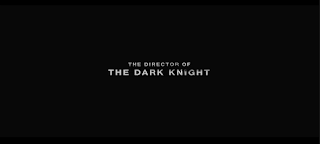
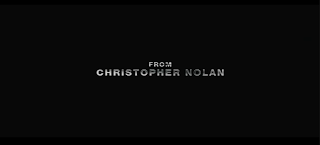
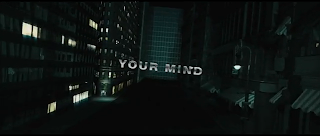
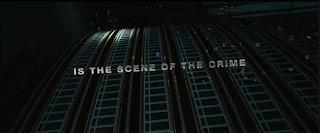
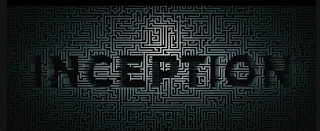
Friday, 8 October 2010
RESEARCH - Analysis of a Teaser Trailer (Sound)
Monday, 4 October 2010
RESEARCH - Analysis of a Teaser Trailer (Camera Angles and Movement)
 The next shot is a close up of Leonardo DiCaprio's face. He is a big actor so this alone is a great selling point. This is a reaction shot, we can see that he looks uneasy. This builds up even more tension.
The next shot is a close up of Leonardo DiCaprio's face. He is a big actor so this alone is a great selling point. This is a reaction shot, we can see that he looks uneasy. This builds up even more tension. The main unique selling point of the film is its gravity defying effects. The next two shots after are also like this. It is a close up of a glass of water, however the water moves as if there is no gravity. This would be very strange to the viewer and intrigue them even more.
The main unique selling point of the film is its gravity defying effects. The next two shots after are also like this. It is a close up of a glass of water, however the water moves as if there is no gravity. This would be very strange to the viewer and intrigue them even more. 
There is another close up shot of Leonardo DiCaprio. It is also a reaction shot, this confirms him as the protagonist in the film. He is a big actor, and this is one thing that is given away. Nothing much else about the characters or storyline is given away in the trailer.
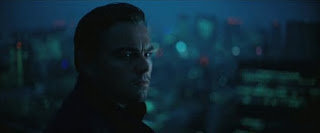 As the music gets faster, so does the cut the next shot. There are many quick close ups of slow motion, gravity defying action scenes. This will draw the viewer in as it is very unique, and will interest the films main target audience. After the quick action shot, there is a shot of someone jumping out of water. This increases the confusion, hopefully leaving the viewer aching for more.
As the music gets faster, so does the cut the next shot. There are many quick close ups of slow motion, gravity defying action scenes. This will draw the viewer in as it is very unique, and will interest the films main target audience. After the quick action shot, there is a shot of someone jumping out of water. This increases the confusion, hopefully leaving the viewer aching for more.The trailer ends with another close up, reaction shot of the main protagonist. It shows him waking up, as if everything that has happened in the trailer so far was in a dream?








